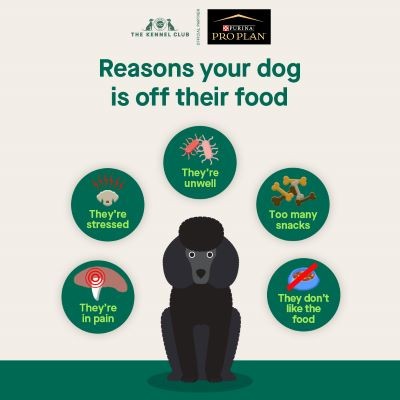It can be alarming and concerning when your furry friend suddenly loses interest in their food. You might be asking, “Why Is My Dog Not Eating Her Food?” This guide will explore the various reasons behind a dog’s loss of appetite, providing insights and practical solutions to help you get your dog back on track. We’ll cover medical and behavioral factors, food-related issues, and when it’s crucial to seek veterinary advice.
Potential Reasons for a Dog’s Loss of Appetite
A dog’s refusal to eat can stem from a variety of underlying issues. Identifying the cause is the first step to resolving the problem. Here are some common reasons why your dog might not be eating:
Medical Causes
A sudden loss of appetite is often a symptom of an underlying health problem. If your dog’s eating habits change abruptly, it’s important to consider possible medical explanations. Some potential medical causes include:
- Dental Issues: Painful teeth, gum disease, or a broken tooth can make eating uncomfortable.
- Gastrointestinal Problems: Infections, inflammation, or obstructions in the stomach or intestines can lead to nausea and loss of appetite. Worms or sudden diet changes can also cause tummy upset.
- Pain: Dogs are skilled at hiding pain, but it can significantly impact their appetite.
- Organ Dysfunction: Problems with the heart, lungs, liver, pancreas, or kidneys can cause a general feeling of illness and reduced appetite.
- Infections: Viral or bacterial infections can cause your dog to feel unwell and disinterested in food.
- Medication Side Effects: Certain medications can have side effects that include decreased appetite.
Behavioral Causes
Dogs are emotional creatures, and their environment and routine can significantly impact their appetite. Behavioral reasons for a dog not eating include:
- Environmental Changes: Moving to a new home, construction noise, fireworks, or the introduction of a new pet can cause anxiety and stress.
- Routine Disruptions: Changes in the family, such as a death, breakup, or a new work schedule, can disrupt a dog’s sense of security.
- Separation Anxiety: Dogs with separation anxiety may refuse to eat when their owners are away from home.
Food-Related Issues
Sometimes, the problem lies with the food itself. Consider these food-related factors:
- Food Spoilage: Stale, expired, or spoiled food can be unappetizing or even harmful.
- Changes in Food Formula: A “new and improved” formula might not appeal to your dog’s taste.
- Picky Eating: Your dog may simply be a fussy eater who prefers treats or table scraps over their regular food. This is often learned behavior.
- Overfeeding: Too many treats or snacks can reduce a dog’s appetite for regular meals.
What to Do When Your Dog Won’t Eat
If your dog is refusing food, here’s a step-by-step approach to help identify and address the problem:
-
Assess the Situation: Determine if the loss of appetite is sudden or gradual. Check for other symptoms like vomiting, diarrhea, lethargy, or pain.
-
Check the Food: Ensure the food is fresh, not expired, and stored properly. Try offering a small amount of a different food to see if your dog is simply being picky.
-
Address Environmental Factors: Create a calm and quiet environment for your dog during mealtimes. Minimize stress and anxiety.
-
Offer Tempting Options: Warm the food slightly to enhance its aroma, or try adding a small amount of cooked chicken or broth (low sodium) to make it more appealing. Hand-feeding can also sometimes entice a dog to eat.
-
Ensure Hydration: Always ensure your dog has access to fresh, clean water. If your dog is not drinking, try adding a small amount of tuna juice (in water, not oil) to the water to encourage them.
When to Consult a Veterinarian
It’s essential to seek veterinary attention if your dog:
- Hasn’t eaten anything in the last 24 hours.
- Shows other signs of illness, such as vomiting, diarrhea, lethargy, or pain.
- Is also refusing to drink water.
- Is losing weight.
- Has signs of dental problems.
A veterinarian can perform a thorough examination to determine the underlying cause of your dog’s loss of appetite and recommend appropriate treatment.
Addressing Fussy Eating Habits
If your vet has ruled out any medical conditions and suspects your dog is simply a picky eater, here are some strategies to try:
- Establish a Routine: Feed your dog at the same time each day and remove the food after 15-20 minutes, whether they eat it or not. This helps establish a consistent eating pattern.
- Limit Treats: Reduce the amount of treats and snacks your dog receives throughout the day.
- Avoid Giving in: Resist the urge to offer alternative foods when your dog refuses their regular meals. Consistency is key to breaking picky eating habits.
- Consider a Food Puzzle: Food puzzles can make mealtimes more engaging and stimulating for your dog.
Special Considerations
-
Pregnant Dogs: If your pregnant dog is not eating, offer small, frequent meals of her favorite food. Growth-type diet may be more appropriate during the last third of pregnancy. Contact your vet if the dog hasn’t eaten in 24 hours or is losing weight.
-
New Dogs: New dogs may be stressed and anxious in their new environment. Give them time to adjust, and offer food in a quiet, calm space.
-
Senior Dogs: Older dogs can have changing appetites due to dental issues, decreased sense of smell, or underlying health conditions. It’s important to maintain a consistent routine and consult with your veterinarian if you notice any significant changes.
Conclusion
Discovering the reasons “why is my dog not eating her food” can be challenging, but by systematically evaluating potential medical, behavioral, and food-related causes, you can often identify the problem and find a solution. Always consult with your veterinarian if you have any concerns about your dog’s health or appetite. With patience and care, you can help your furry friend regain their appetite and enjoy their meals once again.

